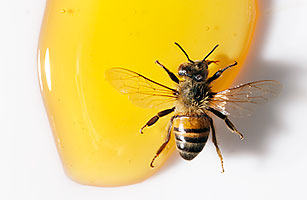
Kathy Blythe was pulling weeds in her backyard in Ivins, Utah, one day last spring when she first noticed the bees. Next she found them buzzing around her outdoor spa and covering her hummingbird feeder, and she soon discovered a trail coming from the direction of her neighbor Cathy Smith’s lot. As it turns out, Smith had recently become one of the nation’s 125,000 or so beekeepers–up 25% in the past five years, according to Kim Flottum, editor of Bee Culture magazine. The honeybee’s well-publicized though still mysterious decline–colony-collapse disorder is the most likely culprit–has become a rallying cry for many people to raise them in their backyard . As a result, several big cities, including New York, Minneapolis, Denver and Milwaukee, have recently revoked laws banning the hobby. Since New York City lifted its ban last spring, membership in the local beekeeping club has risen 900%. But many smaller communities won’t budge. “It’s a ridiculous request,” says David Bowman, a council member in York County, South Carolina, which in March shot down a petition to allow beekeeping in residential lots, citing the risk of people’s getting stung. Beekeeping advocates say fears are overblown. The honeybees cultivated by backyard keepers are the tame European variety, which are much less likely to attack than Africanized bees. “The bees are not interested in stinging you,” says Danielle Downey, Utah’s chief apiarist for the past two years. What’s more, less than 1% of people stung experience the severe allergic reactions that require immediate medical attention. But even the most ardent bee lovers admit that not everyone is cut out to be a beekeeper. “A lot of people don’t know how to take care of them,” says Gaylon Yack, president-elect of the Utah Beekeepers Association. To keep honeybees from pestering neighbors, it’s essential to give them an adequate food supply inside the hive and provide fresh water nearby. Swarming–thousands of bees leaving the hive at once in a tight cluster–can be prevented by making sure the colonies, which can grow from an initial 20,000 bees in the spring to 80,000 by late summer, have enough room to multiply. It doesn’t seem as if the skirmish will let up anytime soon, however. Back in Ivins, Blythe got 30 neighbors to e-mail the city council in early April with their opposition to a proposed ordinance that would allow beekeeping on residential lots. After a heated debate on the matter, the council voted unanimously on April 7 to keep the residential ban in place. “You can’t put a bee on a leash,” notes Blythe. See TIME’s Pictures of the Week.
See the Cartoons of the Week.